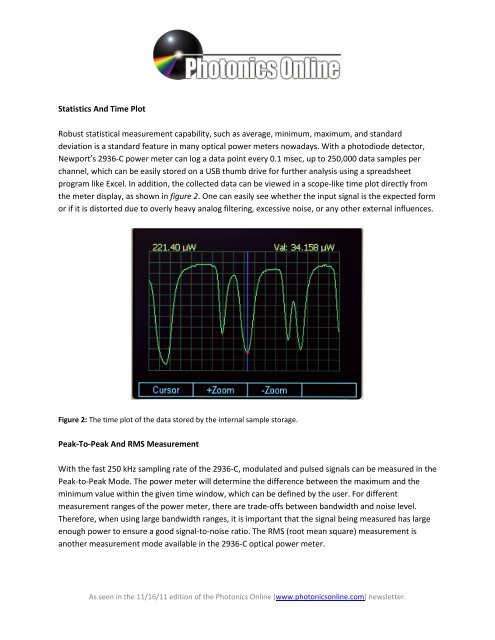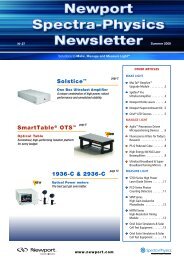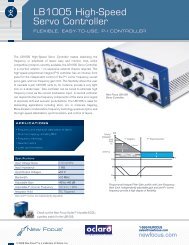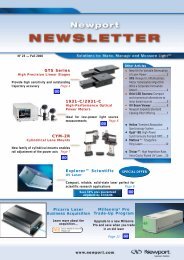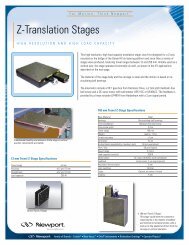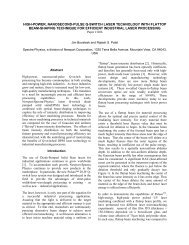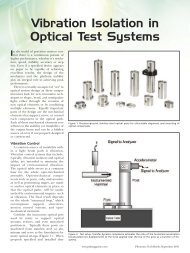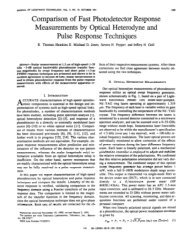Meeting Measurement Challenges For Low-Power, Pulsed, Or ...
Meeting Measurement Challenges For Low-Power, Pulsed, Or ...
Meeting Measurement Challenges For Low-Power, Pulsed, Or ...
- No tags were found...
Create successful ePaper yourself
Turn your PDF publications into a flip-book with our unique Google optimized e-Paper software.
Statistics And Time PlotRobust statistical measurement capability, such as average, minimum, maximum, and standarddeviation is a standard feature in many optical power meters nowadays. With a photodiode detector,Newport’s 2936-C power meter can log a data point every 0.1 msec, up to 250,000 data samples perchannel, which can be easily stored on a USB thumb drive for further analysis using a spreadsheetprogram like Excel. In addition, the collected data can be viewed in a scope-like time plot directly fromthe meter display, as shown in figure 2. One can easily see whether the input signal is the expected formor if it is distorted due to overly heavy analog filtering, excessive noise, or any other external influences.Figure 2: The time plot of the data stored by the internal sample storage.Peak-To-Peak And RMS <strong>Measurement</strong>With the fast 250 kHz sampling rate of the 2936-C, modulated and pulsed signals can be measured in thePeak-to-Peak Mode. The power meter will determine the difference between the maximum and theminimum value within the given time window, which can be defined by the user. <strong>For</strong> differentmeasurement ranges of the power meter, there are trade-offs between bandwidth and noise level.Therefore, when using large bandwidth ranges, it is important that the signal being measured has largeenough power to ensure a good signal-to-noise ratio. The RMS (root mean square) measurement isanother measurement mode available in the 2936-C optical power meter.As seen in the 11/16/11 edition of the Photonics Online (www.photonicsonline.com) newsletter.


